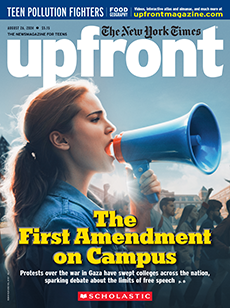1. Set Focus
Pose this essential question: What is the “separation between church and state”?
2. List Vocabulary
Share some of the challenging vocabulary words in the article (see below). Encourage students to use context to infer meanings as they read.
- secular (p. 19)
- constitutionality (p. 20)
- indicted (p. 20)
- prosecute (p. 20)
- compatible (p. 21)
- doctrine (p. 21)
3. Engage
Provide this text from the First Amendment: “Congress shall make no law respecting an establishment of religion, or prohibiting the free exercise thereof.” Have students discuss its meaning.
